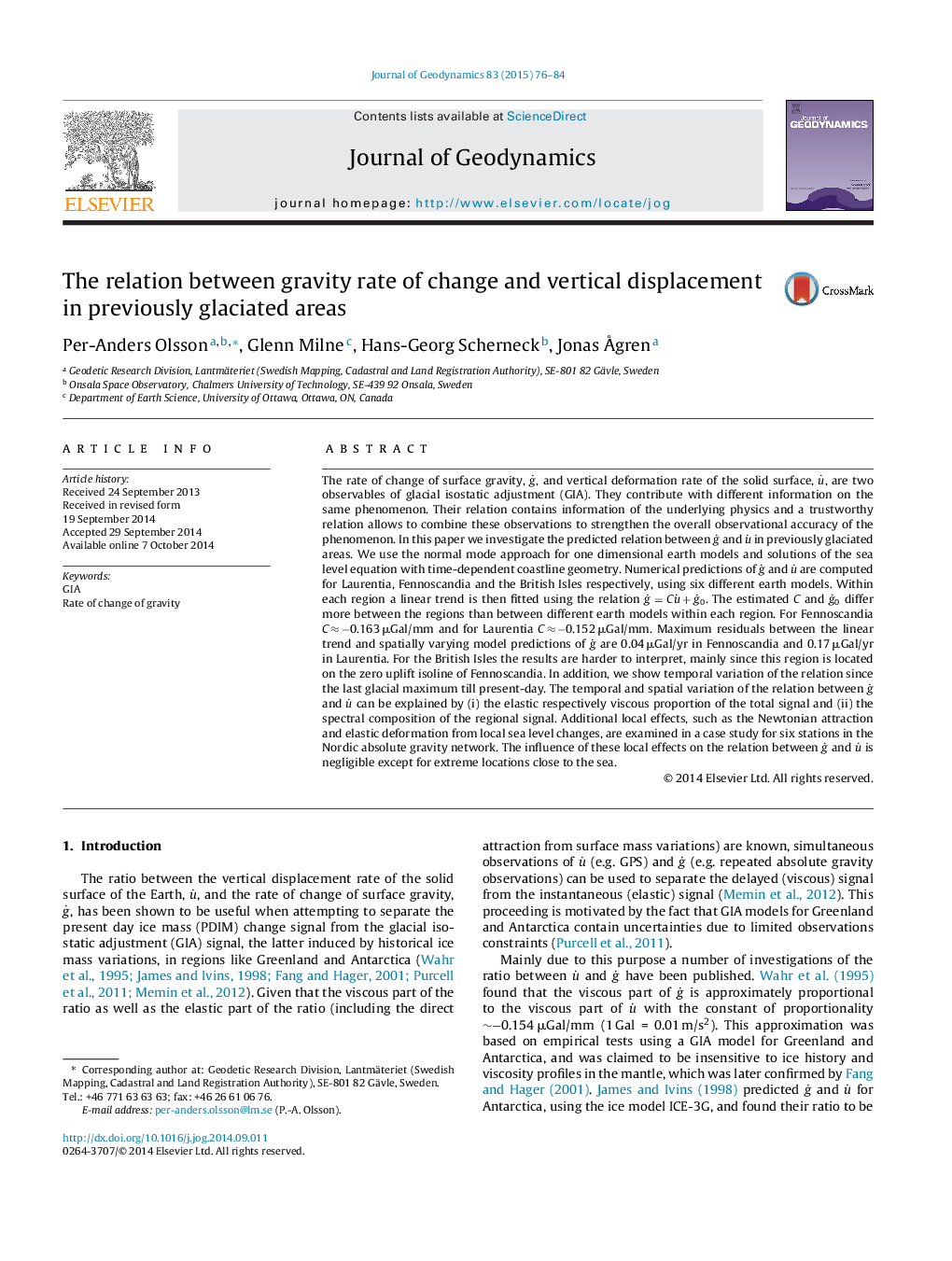| Article ID | Journal | Published Year | Pages | File Type |
|---|---|---|---|---|
| 4688004 | Journal of Geodynamics | 2015 | 9 Pages |
•We study relation between postglacial gravity change and vertical displacement.•A linear relation is used as a reference.•Deviations from the linear relation are small (compared to observational accuracy).•The linear relation depends more on ice history than on earth model.
The rate of change of surface gravity, g˙, and vertical deformation rate of the solid surface, u˙, are two observables of glacial isostatic adjustment (GIA). They contribute with different information on the same phenomenon. Their relation contains information of the underlying physics and a trustworthy relation allows to combine these observations to strengthen the overall observational accuracy of the phenomenon. In this paper we investigate the predicted relation between g˙ and u˙ in previously glaciated areas. We use the normal mode approach for one dimensional earth models and solutions of the sea level equation with time-dependent coastline geometry. Numerical predictions of g˙ and u˙ are computed for Laurentia, Fennoscandia and the British Isles respectively, using six different earth models. Within each region a linear trend is then fitted using the relation g˙=Cu˙+g˙0. The estimated C and g˙0 differ more between the regions than between different earth models within each region. For Fennoscandia C ≈ −0.163 μGal/mm and for Laurentia C ≈ −0.152 μGal/mm. Maximum residuals between the linear trend and spatially varying model predictions of g˙ are 0.04 μGal/yr in Fennoscandia and 0.17 μGal/yr in Laurentia. For the British Isles the results are harder to interpret, mainly since this region is located on the zero uplift isoline of Fennoscandia. In addition, we show temporal variation of the relation since the last glacial maximum till present-day. The temporal and spatial variation of the relation between g˙ and u˙ can be explained by (i) the elastic respectively viscous proportion of the total signal and (ii) the spectral composition of the regional signal. Additional local effects, such as the Newtonian attraction and elastic deformation from local sea level changes, are examined in a case study for six stations in the Nordic absolute gravity network. The influence of these local effects on the relation between g˙ and u˙ is negligible except for extreme locations close to the sea.
